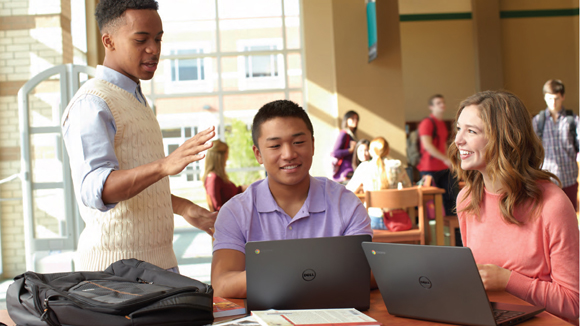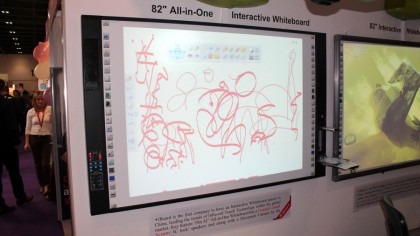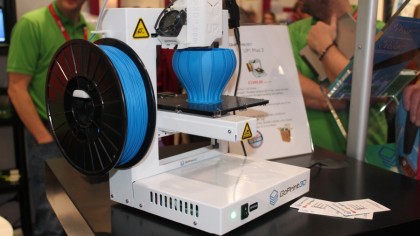Five ways tech is transforming the classroom in 2014
The latest elearning trends from BETT 2014

Most people are aware of the huge impact technology has had on homes and businesses, but what about schools?
Unless you've been a teacher or pupil in the last 10 years, you could be forgiven for conjuring images of wheezing halogen projectors, ticking Windows XP timebombs and VHS tapes so dusty they're almost sentient beings.
Walking around the recent BETT 2014 education expo in London shows just how much things have changed. Technology pervades just about every aspect of learning, transforming classrooms into interactive, connected and engaging environments. Forget about trying to stop kids sticking chewing gum on the underside of their desks though - even expensive gadgetry can't put a stop to that.
So what technology trends might you see if you walk into tomorrow's classroom, today? If your school is lucky enough to have the required funds, these would make it cooler than James Bond dropping you off at the school gates.
1. Massive, clever interactive whiteboards

Interactive whiteboards are like smartphones: you can't go for five minutes in a school without seeing one and some are a ton more useful than others. They were out in force at BETT 2014: big ones, small ones, some designed to be pawed at by children with chocolate-covered fingers and others taking the shape of fully-fledged all-in-one PCs the size of small cars.
They've been around since the mid '90s, but newer ones aim to stand out by delivering features via the cloud and allowing real-time collaboration between classroom-based teachers and students via smartphones and tablets.
Malcolm Taylor, Product Specialist for interactive large format displays at iBoardTouch, says that competition between vendors has become increasingly fierce as they have grown in popularity over the last 15 years.
Are you a pro? Subscribe to our newsletter
Sign up to the TechRadar Pro newsletter to get all the top news, opinion, features and guidance your business needs to succeed!
"It's now a case of who can provide the better solution as opposed to who can provide the flashiest whiteboard," he says, adding that vendors aim to cover all potential classroom scenarios. "It's about giving teachers the right tools. That could be videoconferencing software that allows for remote teaching, or the ability to record classes so that teachers can prepare video tutorials and have them ready on the school network."
Taylor also reckons they can save schools a wad of cash when compared to projector technology used for similar purposes.
He adds: "Our LED screens run between 150 and 200 watts, while a projector runs at around 400 to 500 watts connected to a separate PC that runs at roughly the same. As such, it would cost around £80 a year to run a typical interactive whiteboard versus a projector that would be closer to £500."
2. A 3D printer could make your next lunchbox

3D printing has injected itself into the world of consumer and business tech, and it's now starting to show its classroom potential. In the UK, that's partly down to education secretary Michael Gove introducing 3D printing into the nation's syllabus back in July 2013, but making pop-out horse pictures and Bono-style tinted glasses undoubtedly panders to a global brand of cool.
Unlike larger CAD/CAM solutions that sit in the corner of technology classes, 3D printers are suitable for specific age ranges. The UP!3d's portable leanings makes it a good fit for younger students, while the larger MakerBot Replicator 2 lends itself to older ones who can create larger and more complex structures.
James Blackburn, Sales and Marketing Director at GoPrint3D, explains that 3D printing can help students learn the concept of 'spatial awareness' - that is, designing and manufacturing objects in multiple dimensions to be structurally sound in addition to looking good.
He says: "In product design students can construct things as part of wider kit - parts of a car for example. It not only has to fit together, but the wheels have to turn and you have to test for dynamics. That can form an introduction into the wider world of manufacturing, and the concepts are used in many different industries - from automotive to aerospace and healthcare."
